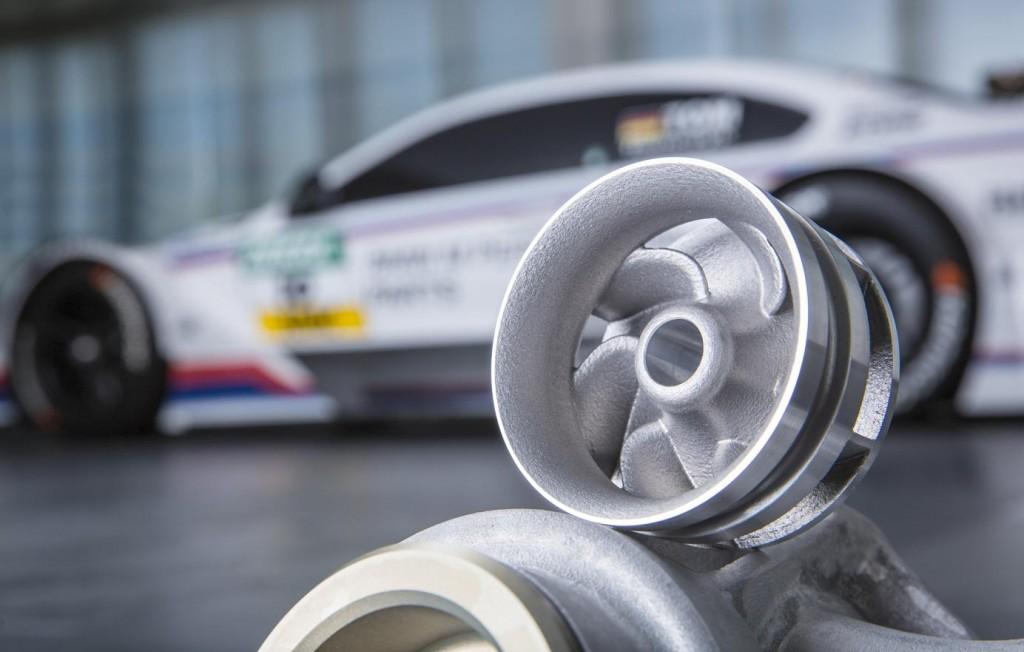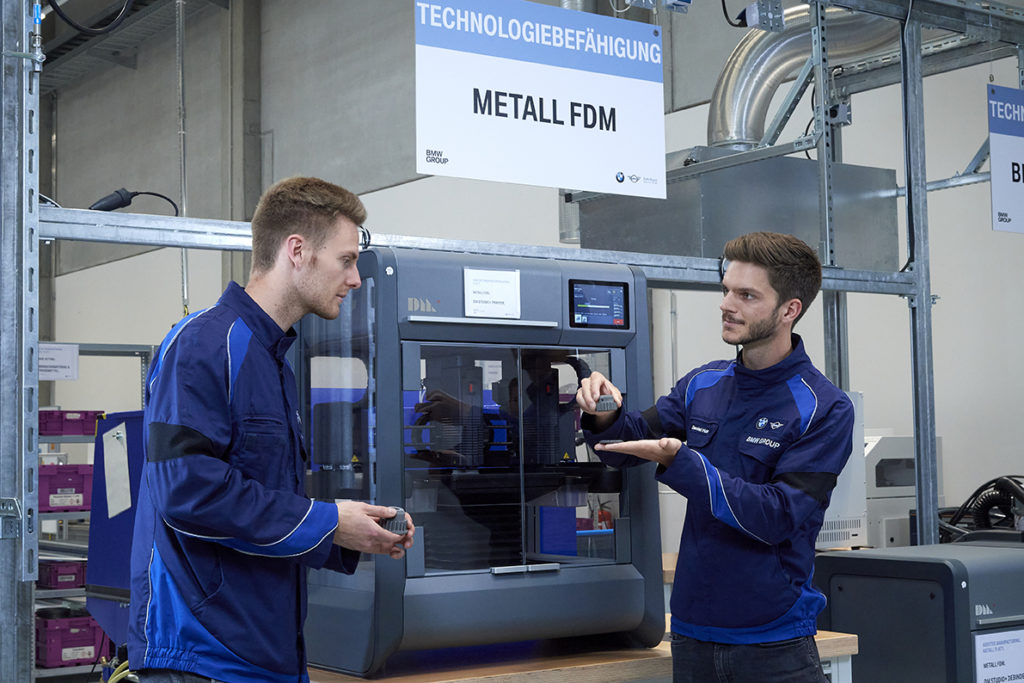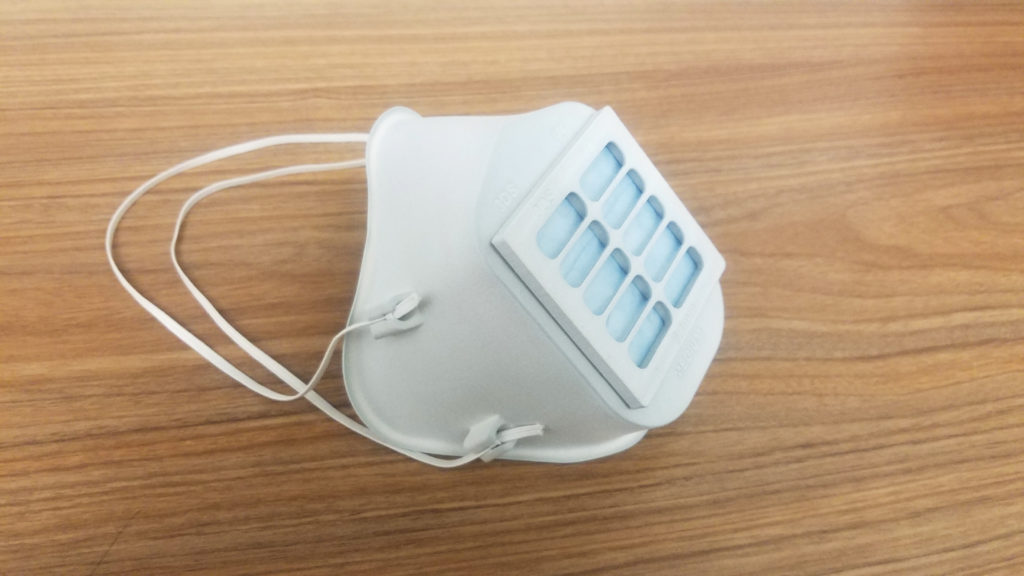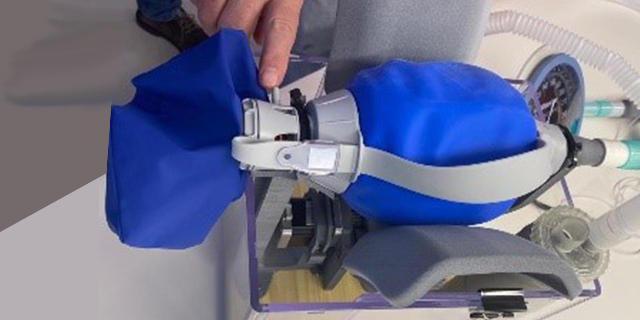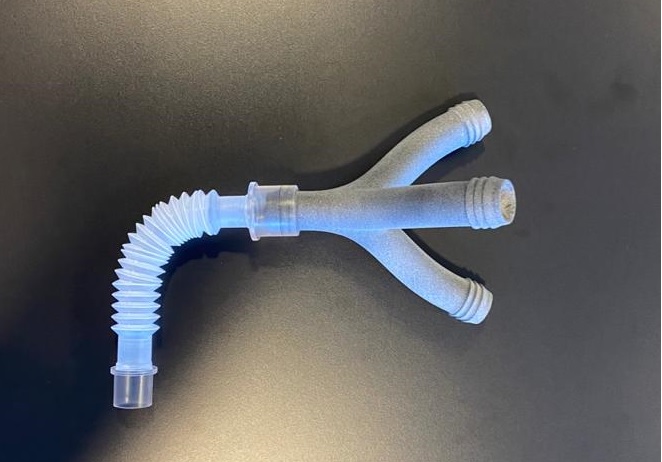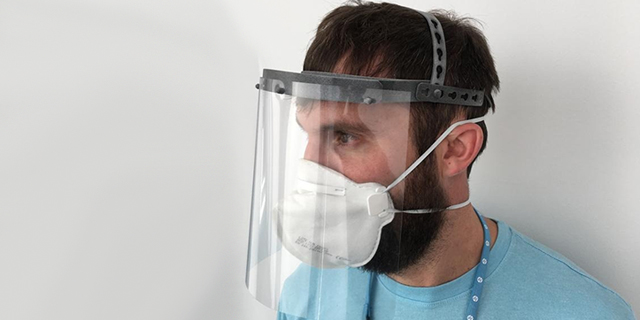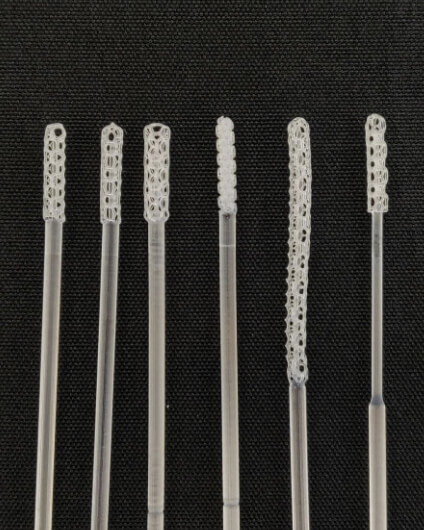BMW opens new €15 million additive manufacturing campus in Munich to “industrialize 3D printing”
BMW Opens €15 Million Additive Manufacturing Campus
BMW Group has opened its new Additive Manufacturing Campus, which combines 3D printing for research, prototyping and series parts production in a single facility. The €15 million investment is meant to further the vehicle giant’s position in the use of additive manufacturing (AM) for the automotive industry.
At the ribbon-cutting ceremony, Milan Nedeljković, BMW AG Board Member for Production, said, “Additive manufacturing is already an integral part of our worldwide production system today, and established in our digitalisation strategy. In the future, new technologies of this kind will shorten production times even further and allow us to benefit even more fully from the potential of toolless manufacturing.”
In 2019, BMW Group 3D printed roughly 300,000 parts. The Additive Manufacturing Campus employs 80 workers running about 50 industrial AM systems, including metals and plastics. Beyond the center, BMW runs 50 other 3D printers globally.
Within the site, there is a “pre-development” team that is dedicated to improving new technologies and materials for use throughout BMW, with a focus on automating process chains. By reducing manual labor, the unit aims to reduce the cost of 3D printing and make it better suited for industrial scale.
An example of the BMW Group’s work in this area is the Industrialisation and Digitisation of Additive Manufacturing for Automotive Series Production (IDAM) project, funded in part by the German Ministry of Education and Research. With the IDAM project, a production line, from production preparation to manufacturing and reworking of parts, is being established at the Additive Manufacturing Campus. The IDAM team will use the production line to create 50,000 series parts annually with 3D printing, including more than 10,000 individual and spare components.
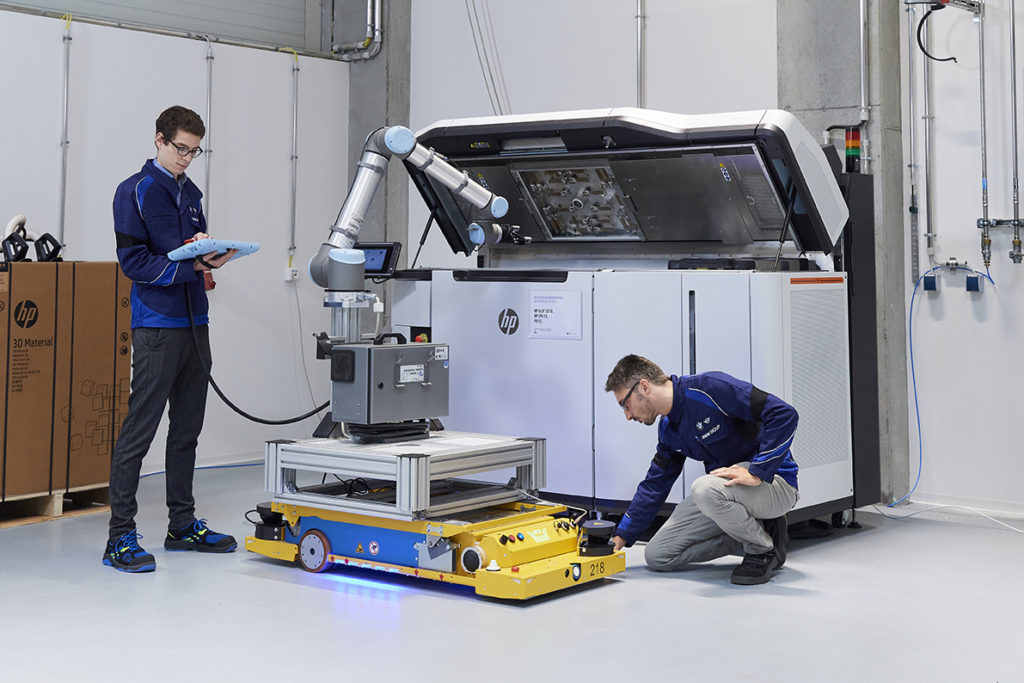
Demonstrating automation work at BMW, this image shows the use of a robotic arm with an HP Multi Jet Fusion system.
Also at the campus, BMW will be performing its work in the POLYLINE project, in which process steps for the series production of plastic parts are connected digitally and a quality assurance strategy is developed to ensure consistent quality throughout the process chain. The 15 members of the POLYLINE consortium will use the facility to create and test what they consider a “future-proof” automated production line for 3D printing plastic parts that is digitally linked. So far, the project members suggest that, through this work, manufacturing costs can be cut by 50 percent, while improving the stability of 3D printing and sustainability of production overall.

The Campus will also provide consulting and training courses for workers throughout the BMW Group as a means of successfully rolling out the various AM technologies and methodologies.
BMW has been involved in 3D printing for nearly 30 years, first prototyping parts for concept cars in 1991 before using AM for small series production in 2010. Namely, metal powder bed fusion was used to 3D print water pump wheels for DTM race cars. Since then, the company has 3D printed parts for the Rolls-Royce Phantom, BMW i8 Roadster and MINI John Cooper Works GP, a vehicle that features four 3D-printed components standard.
In addition to part production, the corporation has been investing in new AM technologies via its venture capital arm, BMW i Ventures. In 2016, the division funded Carbon’s Digital Light Synthesis for continuous digital light processing. The next year, it contributed to Desktop Metal, which has since released metal binder jetting, bound metal deposition and carbon fiber 3D printing systems.
Other investments have gone to digital manufacturing platform Xometry and German startup ELISE, dedicated to automating product design. The company can purportedly save up to 90 percent in design time by producing part “DNA” that encompasses such information as technical and load requirements, as well as manufacturing restrictions, optimization parameters and costs. The DNA can be used to then automatically create optimized parts.
All of this is directed toward BMW’s larger goals for AM and automation, which Daniel Schäfer, Senior Vice President for Production Integration and Pilot Plant at the BMW Group, spoke to: “Our goal is to industrialise 3D printing methods more and more for automotive production, and to implement new automation concepts in the process chain. This will allow us to streamline component manufacturing for series production and speed up development. At the same time, we are collaborating with vehicle development, component production, purchasing and the supplier network, as well as various other areas of the company to systematically integrate the technology and utilise it effectively.”
As described here, BMW has demonstrated expert use of the technology, just as one would expect. When it comes to series production, so far 3D printing has been limited to luxury and sports vehicles. Given its experience and expertise, however, it seems relatively safe to assume that it will be among those pushing series production of AM to more mainstream product lines. By reducing costs through the projects described above and by adopting newer technologies designed for large batch production, we may ultimately see 3D-printed end parts make it into products that the average consumer might interact with.
[Images/Source: BMW Group.]
The post BMW Opens €15 Million Additive Manufacturing Campus appeared first on 3DPrint.com | The Voice of 3D Printing / Additive Manufacturing.
DLP 3D Printing: Mechanical & Strain-Sensing for Carbon Nanotube Reinforced Composites
Researchers from Spain continue the trend for the development of new combinations of materials, detailing their study in the recently published ‘Mechanical and Strain-Sensing Capabilities of Carbon Nanotube Reinforced Composites by Digital Light Processing 3D Printing Technology.’
While there have been numerous studies regarding carbon nanotube (CNT) reinforced composites—from improving materials to creating sensors for wearables, to e-textiles, and much more—here, the authors perform a more unique study regarding mechanical properties and strain sensors, with the ‘development of a conductive ink for DLP 3D printing technology with self-sensing capabilities based on a commercial photocurable resin doped with CNTs.’
Noting that 3D printing is making huge impacts within the industrial world, and in many other applications too, the authors state quite accurately that there is ‘a wide field for improvement.’
Composites are becoming increasingly popular in the 3D printing arena as users on all levels are able to meet their needs better for varying research, projects, and manufacturing of stronger parts.
“In particular, carbon nanotube (CNT) doped resins has been the subject of numerous studies in the last decades due to their great mechanical, thermal, and electrical properties,” state the researchers. “Their addition in low contents into an insulator resin allows the formation of electrical percolating networks inside the material, leading to an increase in electrical conductivity of the material of several orders of magnitude.”
Structural health monitoring (SHM) is a primary application able to benefit from such materials, as sensors can detect strain damage in metallic gauges. Previously, a variety of 3D printing studies have involved CNTs as fillers in developing parts with electrical properties, elastic strain sensors, shielding devices, and flexible electronics.
In this study, the researchers varied CNTs as they assessed the effects on conductivity. Next, the potential for strain sensing was investigated as the authors evaluated the impacts of load state and post-curing treatments.
A B9Creator was used for 3D printing six samples for the study with CNT content of 0.030, 0.050, 0.075, 0.100, and 0.150 wt %.
“The most relevant printing parameters were 30 µm of layer thickness and 5.12 s of exposure time per layer, except for those specimens with a 0.150 wt % CNTs, where the exposure time was increased to 6.84 s,” stated the authors.
“This is due to the higher CNT content that induces a more prevalent UV light shielding effect caused by CNTs, reducing UV radiation exposure of the photoinitiator and leading thus to an underexposure condition. On the other hand, overexposure conditions were observed for specimens with CNT contents below 0.100 wt % and longer UV light exposure times than 5.12 s.”
Half of the samples were subjected to UV post-curing treatments as the researchers studied the influence on strain sensing and mechanical properties.

Examples of 3D printed parts with 0.100 wt % CNT. (a) Tensile and three-point bending test specimens and (b) complex geometry parts.
DSC samples were also taken for ‘representative results’ as the researchers considered variances in curing degrees of each specimen.
The researchers confirmed that 3D printing is advantageous in this case as nanoparticles are dispersed in resin quickly. With a time delay, greater loss of properties is possible due to re-agglomeration of nanoparticles.
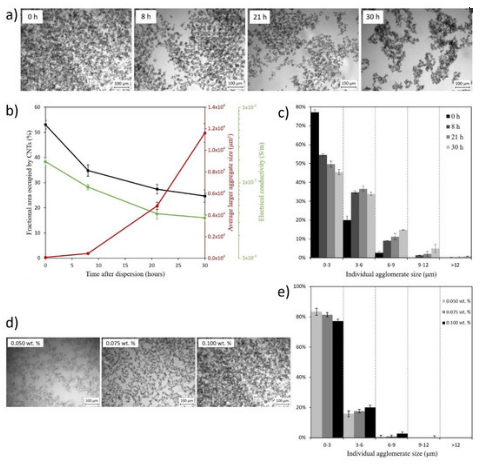
Changes on the dispersion state as a function of time after dispersion process was performed and as a function of CNT content. (a) TOM micrographs of dispersion containing 0.100 wt % CNT at 0, 8, 21, and 30 h after dispersion was carried out; (b) fractional area occupied by CNTs, average larger aggregate size and their influence in electrical conductivity as a function of time since after dispersion; (c) individual agglomerate size as a function of time after dispersion; (d) TOM micrographs at 0 h after dispersion as a function of CNT content; and (e) individual agglomerate size at 0 h after dispersion as a function of CNT content.
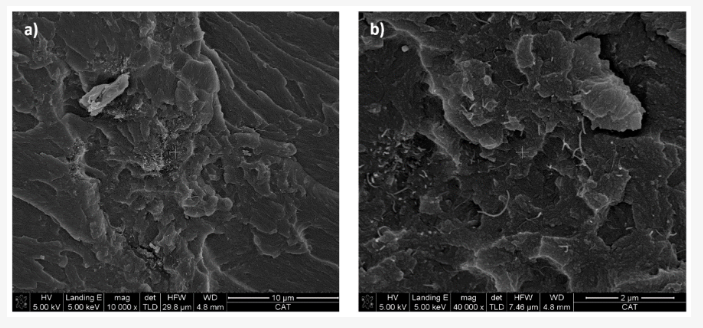
FEG-SEM micrographs showing CNTs distribution of the 0.100 wt % CNT specimen at (a) low magnifications and (b) high magnifications.
The evaluation showed that a suitable CNT distribution was reached with a lower electrical percolation threshold, and in terms of mechanical properties, increased material stiffness.
“Nevertheless, the best results in terms of strain sensitivity were also found for the lowest CNT contents since they are closer to the percolation threshold, with the tunneling effect being the most dominant mechanism of electrical charge transport. Moreover, strain sensitivity was found to be significantly lower for three-point bending tests than for tensile tests as expected because of the effect of the compression-subjected face on the whole electrical resistance of the specimen,” concluded the researchers.
“Therefore, the results prove the excellent capabilities of CNT reinforced DLP-manufactured nanocomposites in strain-sensing applications and shed light into how an UV post-curing treatment and CNT content affects the electromechanical properties of these materials.”
What do you think of this news? Let us know your thoughts! Join the discussion of this and other 3D printing topics at 3DPrintBoard.com.
[Source / Images: ‘Mechanical and Strain-Sensing Capabilities of Carbon Nanotube Reinforced Composites by Digital Light Processing 3D Printing Technology’]
The post DLP 3D Printing: Mechanical & Strain-Sensing for Carbon Nanotube Reinforced Composites appeared first on 3DPrint.com | The Voice of 3D Printing / Additive Manufacturing.
Italy arm in arm as Lamborghini steps up to COVID-19
3D Printing and COVID-19, April 8, 2020 Update
Companies, organizations and individuals continue to attempt to lend support to the COVID-19 pandemic supply effort. We will be providing regular updates about these initiatives where necessary in an attempt to ensure that the 3D printing community is aware of what is being done, what can be done and what shouldn’t be done to provide coronavirus aid.
One of the more interesting innovations to come out of corporate supply and marketing efforts in response to the coronavirus crisis is the development of 3D-printed nasal swabs. In addition to Formlabs, HP and EnvisionTEC, Carbon is 3D printing nasopharyngeal swabs to replenish the supply for COVID-19 testing. It is now doing so at a rate of 1 million swabs weekly and distributing them with in vitro diagnostic and medical device maker Resolution Medical.
The swabs being made by these companies are unique in that, as far as we are aware, this is the first time 3D printing is being used to produce testing swabs for end use. Moreover, they are incorporating unique features that increase the surface area of the swab while reducing the material used, resulting in faster printing and potentially improved mucous collection. This is true of Carbon’s swab design, which also has a brush-like texture.
While one might envision cotton or wood swabs being used for the COVID-19 tests, these materials cannot be used because they might affect the ribonucleic acid (RNA) of the collected sample. To print its swabs, Carbon is relying on a biocompatible resin called KeySplint Soft Clear, used for orthodontic devices such as mouth guards. The swabs are classified by the U.S. Food and Drug Administration (FDA) as a Class I 510(k) Exempt in vitro diagnostic medical device.
Ensuring a steady supply of test swabs is only one part of the problem for expanding the capacity for COVID-19 testing. In Washington state, for instance, not only are they in need of more swabs, but also the viral transport media that the swab goes into. In some cases, there is not a sufficient supply of the reagents needed to run the tests.
Additionally, there are not enough machines to run the various types of tests that are being deployed, nor enough healthcare workers trained in the operation of those tests, resulting in backlogs. This occurred in California, where roughly 33 percent of the over 83,000 tests taken had been processed as of last Saturday.
As is well reported, hospitals are in short supply of the personal protection equipment (PPE) for engaging with patients. This same gear is necessary for lab technicians to process test samples. While we await federal mobilization of large manufacturers to produce the necessary equipment, which has its own extended timeline for retooling factories, numerous 3D printing companies have attempted to lend their support by producing PPE.
Carbon is working alongside its client adidas to manufacture face shields for healthcare workers, reportedly using the same material as is sued for its 3D-printed footwear. Carbon dental customer Candid has converted its manufacturing operations to make face shields as well, with Carbon claiming to make over 18,000 shields weekly.
We learned from Dr. Beth Ripley, Director of the VA 3D Printing Network in the VHA Innovation Ecosystem, that face shields are among the safest items that can be manufactured by hobbyist volunteers. She also pointed out, however, that under non-emergency circumstances, these devices would still need to be made according to Current Good Manufacturing Practices in the U.S. Therefore, it helps for experienced medical device makers and experts to produce these items.
The School of Pharmacy at Queen’s University Belfast typically focuses its 3D printing efforts to make drug delivery systems and medical devices—such as catheters with antibiotics for dialysis patients, microneedles and 3D printed tablets contained multiple drugs. In response to the pandemic, the lab is making face shields. Modifying designs by Spanish engineers, the group is producing parts for healthcare staff across the Belfast Trust medical system. What distinguishes the school’s design from some others being made is the fact that many expose the forehead or may have comfortability issues. So far, the school has made roughly 1,000 face shields and has shared its design online.

A face shield made with a 3D-printed visor and laser cut plastic film. Image courtesy of the School of Pharmacy at Queen’s University Belfast.
3D Systems has also begun printing an emergency stopgap face mask (SFM) for use when standard PPE is not available or in less critical, non-medical environments that don’t require FDA-compliant PPE. The SFM was designed alongside engineers and clinicians at the Veterans Health Administration, is available in multiple sizes and is printed from a biocompatible nylon material using selective laser sintering (SLS). The device is made up of a 3D-printed mask and filter cover, two elastic strips, and a rectangular patch of filter material. It can be disinfected and even sterilized, if the situation demands it.
3D Systems has uploaded the designs, instructions for use, and a manufacturing guidance document for 3D printing the mask using 3D Systems’ SLS equipment and materials, Duraform PA or Duraform ProX PA. This means that manufacturers that have those machines and materials may be able to manufacture the parts in partnership with medical experts. The company will continue to update its COVID-19 response page with the devices it is developing and the stage at which they are ready for production and use.
As the pandemic continues to grip the world, we will continue to provide regular updates about what the 3D printing community is doing in response. As always, it is important to keep safety in mind, remain critical about the potential marketing and financial interests behind seemingly good humanitarian efforts from businesses, and to do no harm.
The post 3D Printing and COVID-19, April 8, 2020 Update appeared first on 3DPrint.com | The Voice of 3D Printing / Additive Manufacturing.
3D Printing for COVID-19, Part Four: Corporate Partners
As small 3D printing businesses and individual users jump at a chance to support efforts to manufacture critically needed medical supplies, larger corporations also see opportunities to lend aid. Among the names involved are HP, Airbus, and Ford.
Emergency Bagger and Splitter
A consortium of Spanish companies has developed an emergency bag valve mask featuring 3D-printed components. Called the Leitat 1, the device is meant to be both simple and robust. Unlike a ventilator, the Leitat 1 is designed more for immediate emergency usage and not long-term use. The design was created by Leitat Technological Center, a private technical institute, and validated by the director of innovation at Hospital Parc Taulí. Airbus, Navantia and HP aim to aid in the production of the device, with manufacturing of 50 to 100 units sought to be established by next week.
Leitat has since gone on to develop a 3D printable splitter (similar to the part discussed in our previous post) that allows multiple patients to use a single respirator. started yesterday the production of a 3D printed splitter that will allow multiple patients affected by the Coronavirus syndrome COIVD-19 to access a single respirator. The company is relying on HP’s multi jet fusion technology with the idea that it might be possible to 3D print 17 parts in a single print job. A number of companies have already begun producing the parts.
Hospital de la Vall d´Hebron and the Consorci Sanitari de Terrassa in Spain are in the process of validating the splitter and ensuring an effective protocol is in place for their implementation. A first round of 200 devices is in the process of being delivered and 1,000 pieces are expected to be produced by next week.
Protective Gear 3D Printed by Ford
Ford Motor Company has partnered with 3M and GE Healthcare in an attempt to scale up its production capabilities for medical equipment and supplies using its in-house AM systems at its Advanced Manufacturing Center in Michigan. The company hopes to manufacture and assemble 100,000 face shields per week, which can complement N95 masks for further protection of medical staff. The first 1,000 shields are being tested this week at Detroit Mercy, Henry Ford Health Systems and Detroit Medical Center Sinai-Grace hospitals.
With 3M, Ford is adapting its existing off-the-shelf components, such as fans from its F-150 vehicle, to work with 3M HEPA filters in order to improve airflow and filter airborne droplets for 3M’s powered air-purifying respirators (PAPRs). The car company is also looking at how to manufacture these PAPR designs at its facilities in Michigan. GE Healthcare is working with Ford to produce simplified versions of GE’s ventilators, potentially manufacturing them at Ford’s own facilities and at a GE site.
Protective Gear 3D Printed by HP
HP has claimed that it is 3D printing critical parts for medical staff, including respirator parts, face masks and shields, mask adjusters, nasal swabs and hands-free door openers. The initial applications are in the validation stages and are now being finalized for mass production; however, HP has already produced over 1,000 parts to hospitals from its research centers in Spain, Oregon, California and Washington. The company is currently discussing with governments, health agencies and industry to determine the possibilities of working together to get these items to medical staff.
Devices being finalized for manufacturing include a hands-free door opener that has been designed by HP partner Materialise, which makes it possible for people to open doors without touching possibly contaminated handles; a mask adjuster that allows staff to improve the comfort of their masks; and brackets for attaching plastic face shields.
Other items that are in the testing face include the Leitat bag valve mask described above and FFP3 face masks. The files will be made available for download and production. Requests and suggestions can also be made directly to HP.
Specialty Test Swabs and Masks from Carbon and Alphabet (Google)
According to the company, Carbon has redirected all of its business operations in California to addressing the COVID-19 outbreak. Working with Verily, the Alphabet-owned company developing the COVID-19 online screening software Project Baseline, the startup has developed a face shield that is already being tested at Stanford Hospital and with Kaiser Permanente.
Carbon also claims to be discussing the use of its technology to 3D print test swabs with adidas, Mayo Clinic and ASU. The test swabs would feature a lattice structure to increase their testing capacity. This project is being performed alongside Stanford Medical Center, Harvard Medical School/Beth Israel Deaconess Medical Center, Desktop Metal’s Ric Fulop, Chan Zuckerberg BioHub and University of North Carolina at Chapel Hill.
In response to interruptions to business operations during the outbreak, Carbon is also allowing for a payment extension for its customers with fewer than 250 employees.
As helpful as any of these parties may wish to be, it is difficult to determine the line between marketing exploit and genuinely altruistic endeavor. Though it feels like there’s no need for elaboration on this point, it’s necessary to underscore the fact that we regularly witness large corporations take advantage of genuine public concerns and health crises to portray those businesses as good samaritans. The sheer number of businesses “stepping up” might reflect that there is some marketing at work here, in spite of any good attentions. We may even be hitting a point at which nearly all 3D printing companies feel pressured or obligated to participate in COVID-19 efforts based on the general zeitgeist of the industry.
Regardless of the intent behind such efforts, it is worth noting that larger institutions have the ability and resources to potentially contribute and actually meet the regulatory requirements of the medical system. Carbon, HP, and Materialise, for instance, have already been working with medical companies to produce sterile parts. The general clout that big businesses have will also get their efforts placed in front of the proper government agencies and regulatory bodies to ensure the safety of their printed devices, whereas small firms may not have the same advantages.
As a doctor pointed out in our last post, it may be necessary for anyone who can contribute to the pandemic to do so, regardless of a company’s motivation. With that in mind, as long as 3D-printed parts are safe and effectively deployed, their efforts may be desirable in this time of need.
The post 3D Printing for COVID-19, Part Four: Corporate Partners appeared first on 3DPrint.com | The Voice of 3D Printing / Additive Manufacturing.

